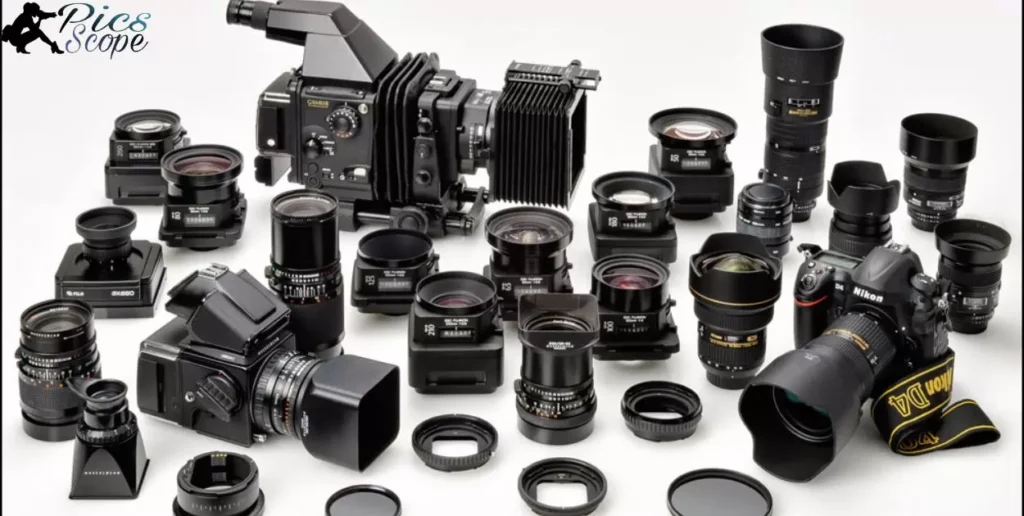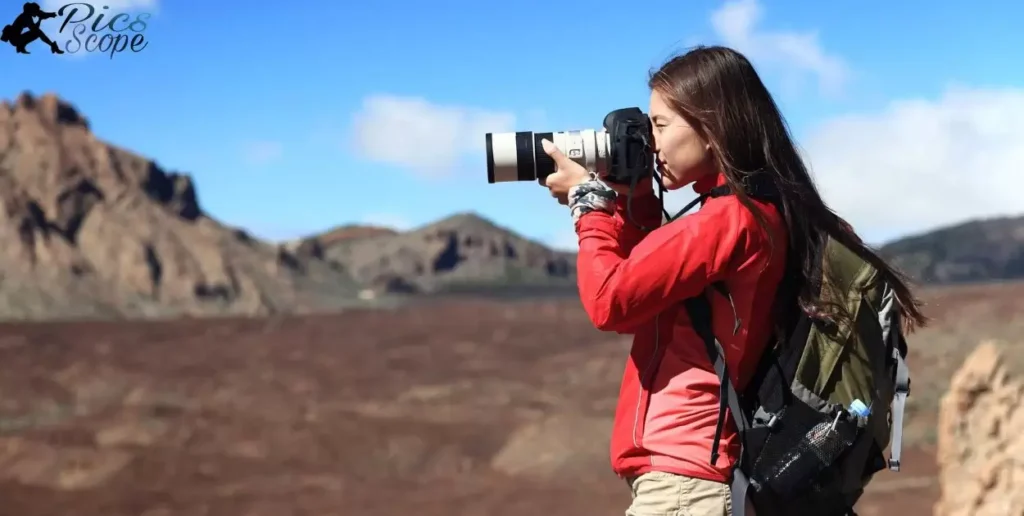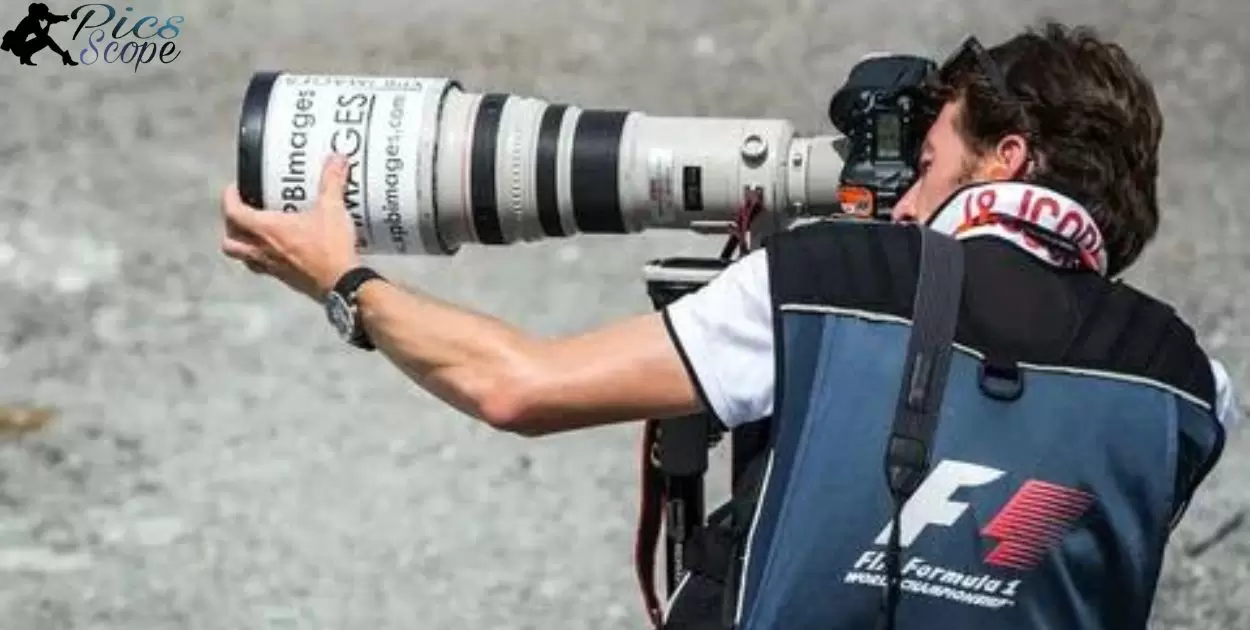A Formula 1 photographer is a professional who takes pictures of Formula 1 racing events, cars, drivers, and crews. Their role is to capture captivating photos that tell the story of a Grand Prix weekend. Formula 1 photographers require skills in sports photography as well as strong technical knowledge of camera settings and equipment.
How To Become A Formula 1 Photographer?” Many motorsport fans dream of having trackside access to the exciting world of Formula 1. Being so close to the action and capturing iconic images of racing legends is an unforgettable experience. If you have a passion for photography and Formula 1, becoming a certified F1 photographer could make that dream a reality.
Gaining official Formula 1 photographer status involves developing an exceptional motorsport portfolio. This requires photographing lower-tier racing events to build skills and make industry connections. Once established, reaching out to teams and media outlets can open doors to shoot F1 tests and race weekends.
What skills are required for Formula 1 photography?
Strong technical photography skills are critical, including mastery of shutter speed, aperture, and ISO to capture fast-moving subjects. Photographers must also have physical fitness and endurance for long days carrying heavy gear in difficult weather conditions.
Creativity and perseverance are also vital to find unique angles and overcome access challenges. Strong post-processing skills are needed to deliver images quickly for publication during race weekends. Interpersonal skills are also key to build relationships with teams and drivers for access, as well as editors to understand deliverable requirements.
What technical photography skills are needed?
Mastering technical photographic skills is critical for producing high-quality images under the challenging conditions found in motorsports. Factors like fast motion, uneven lighting, and restricted access require expertise to overcome. The following table outlines some of the most vital technical proficiencies needed for compelling motorsports photography:
| Technical Skill | Description |
| Fast Shutter Speeds | Ability to use fast shutter speeds to freeze high speed motion without blurring |
| Panning | Panning technique to blur background and keep subject in sharp focus |
| Low Light Shooting | Expertise in shooting quality images in low light conditions |
| Lens Choice | Selecting optimal lenses for different situations (wide angles, telephotos, primes, etc.) |
| Camera Settings | Knowledge of how to quickly adjust ISO, aperture, shutter speed settings |
| Focus | Ability to manually focus quickly and accurately on moving subjects |
| Positioning | Getting into optimal trackside positions for different situations |
The table summarizes key abilities like using fast shutter speeds, panning, and manual focus that allow motorsports photographers to overcome challenges and capture compelling images under pressure. Continuously honing these technical proficiencies through hands-on experience is critical for success.
What Formula 1 knowledge is required?
Intimate knowledge of driver lineups, car liveries, team operations, racing regulations and strategies allows photographers to anticipate and capture pivotal moments during races. Understanding the storylines around teams, drivers and the season-long championship aids in editing impactful image selections.
Learning the unique features and operational areas of each track on the calendar informs creative vantage points. Continuously studying the sport helps visualize compelling images that resonate for editorial clients and audiences.
How to gain access as a Formula 1 photographer
Gaining access starts with developing exceptional skills shooting lower-tier racing series and building a standout portfolio. Persistently connecting with team public relations staff and editors can lead to accreditation opportunities. Being an excellent professional partner once access is granted keeps access. Many start by shooting fan perspectives from public areas before gaining official access over years of relationship building. Patience and determination is key, as is constantly improving technical skills through practice and studying the work of established professionals.
What camera equipment is best for Formula 1 photography?

A DSLR camera with a fast, reliable autofocus system is essential for capturing fast-moving F1 cars. Top choices are high-end Canon and Nikon models like the Canon EOS-1D X Mark II or Nikon D5.
These cameras have rapid burst shooting modes to capture multiple shots per second, expanded autofocus points, and excellent high ISO performance for low light shooting. Lenses are equally important, with top motorsport photographers recommending fast telephoto zooms like 70-200mm f/2.8 and 300mm f/2.8 primes. These allow flexibility to compose shots while tracking motion.
What lenses work best?
The 70-200mm f/2.8 telephoto zoom lens is considered an essential starter lens for motorsport photography. Its focal length range allows photographers to capture on-track action at most venues. The bright f/2.8 maximum aperture provides the ability to shoot in lower light conditions.
As skills improve, a 300mm f/2.8 prime lens becomes important for framing tighter shots from a distance. This focal length compressed backgrounds nicely at race tracks. Wide angle zooms like 16-35mm f/2.8 help capture environmental shots showing more context. Fast prime lenses allow for creativity through narrow depth of field effects.
What camera settings should be used?
Using fast shutter speeds of 1/500th second or faster is imperative for freezing F1 car motion without blurring. Photographers often choose aperture priority mode and set wide apertures around f/4-f/5.6 for background separation, then let the camera select the right shutter speed. Continuous autofocus tracking modes help keep cars in focus as they approach and pass by.
Burst drive shooting then captures multiple sharp frames per second. Some pre-focus manually on a point the cars will pass through. High ISO settings of 1600 or greater best handle low light and faster shutter speeds.
How to manage camera equipment at races
Motorsport venues limit the size of camera bags allowed, so being selective with gear is necessary. Most photographers opt for one or two pro-level DSLR bodies. Telephoto zooms like 70-200mm f/2.8 get used most, along with a 300mm prime if permitted. A wider zoom adds flexibility. Tripods are generally not allowed but monopods can help stabilize heavy lenses.
Remote triggers allow firing the camera while tracking cars with lenses. Weather sealing on cameras and lenses is useful. Carrying multiple charged batteries and memory cards ensures no missed photo opportunities while changing them out
How much does it cost to become a Formula 1 photographer?
Becoming a Formula 1 photographer requires years of dedication and work before you can expect to earn an income. You need photography skills, equipment, access credentials, and the ability to travel. Significant personal investment is required with no guarantee of financial return. Expect high costs for equipment, travel, and access with little or no pay at first.
Building a photography portfolio and connections takes time and money. Unpaid work may be needed initially to gain trust and prove skills. Costs add up from attending many races to market yourself before paid work is possible.
What is the cost of photography equipment?
Top-level cameras and lenses are essential and can cost tens of thousands of dollars. F1 requires fast shutter speeds to freeze action which demands expensive gear. Long telephoto lenses are a must, with a 400mm f/2.8 lens costing over $10,000.
Multiple camera bodies ensure reliability, adding further expense. Additional costs come from computers, software, hard drives, and more. Quality equipment is not cheap but utterly vital for success. Ongoing costs continue even after the initial purchase. Gear requires regular maintenance, repairs, and replacement.
Bodies and lenses must be upgraded to remain competitive. Damage or loss is a constant risk requiring insurance. Equipment costs are a huge barrier, especially when first starting out. Significant personal funds or sponsorship is necessary to acquire and maintain pro gear.
Are there travel costs involved?
Covering multiple races a year incurs major travel expenses. Attending European races like Monza or Silverstone from abroad means flights, hotels, transport, and meals. Even photographers living in Europe face drives of hundreds or thousands of miles between races. Costs ramp up further flying to overseas races like Montreal, Melbourne or Abu Dhabi.
Teams cover travel costs for embedded photographers, but independent photographers pay their own way. Building connections with teams to gain paid embeds takes years. In the meantime, personally funding travel is required to expand your portfolio. The constant need to travel internationally contributes hugely to the overall costs.
How much are access credentials?
Gaining official F1 access credentials is extremely difficult and competitive. With limited passes available, priority goes to major publications who can pay thousands of dollars per pass. For independent photographers, the costs can be prohibitive without a client assignment. Some sell personal assets or equipment to fund credentials and enter races speculatively to build connections.
Once a pass is obtained, maintaining credentials requires attending multiple races a year. This leads back to extensive travel costs simply to retain eligibility. Teams may provide passes to embedded photographers but usually only after years of working together. Race access involves major costs for independent photographers hoping to break into F1.
Where do Formula 1 photographers stand to capture photos?

Formula 1 photographers stand trackside in designated safe areas to capture photos. Permanently accredited photographers get parking spots at the tracks and access to locations near the pit lane and around corners to photograph cars on track.
They carry a lot of heavy gear and need to move quickly between locations to capture the best angles as the action unfolds. Photographers also stand in the paddock area to photograph teams working on the cars and drivers arriving. They get very little time to capture portraits or interactions up close before the race starts. Timing and efficiency are critical to get the shots they need.
Where are the designated photographer areas?
The FIA designates safe standing zones around the track for photographers to shoot from. These photographer areas provide visibility of high speed sections, tricky corners, the start/finish line, and pit lane while keeping photographers protected by fences and barriers. Locations vary by circuit.
In the paddock, photographers get access to the team garages and hospitality areas to photograph mechanics prepping the cars and interactions with drivers and team principals. Anywhere outside the designated zones is off limits. Photographers must carry credentials to access secure zones.
How to capture dynamic race action shots?
Capturing dynamic race action requires anticipation, rapid shooting, and an ability to pan smoothly. Photographers use the highest shutter speed possible to freeze the fast cars without motion blur. They manually focus on a section of track and pan as the cars approach at high speed, firing bursts of shots to capture the peak action.
The most dramatic angles come from low shooting positions right at track level. Photographers kneel or lie down for unique perspectives of cars flying by. Quick reaction time, skillful handling of heavy gear, and ability to compose well in a split second make for great race photos.
What angles provide the best photographic opportunities?
The best angles show speed, motion, spray, and proximity to other cars. Photographing through corners as cars brake hard or accelerate out provide chances to emphasize motion and drama. Shooting a fast straight on shows maximum speed.
Become A Celebrity Photographer Unique angles like from an overhead bridge or extremely low and close to track height make photos stand out. Silhouettes, reflections, light trails, and dramatic skies also lend visual impact. The most creative images often come from unexpected vantage points or clever use of backgrounds.
How competitive is Formula 1 photography as a career?
Formula 1 photography is an extremely competitive field to enter. There are a limited number of accreditations given out each year, yet many aspiring photographers trying to gain access. Veterans with years of experience and established relationships often get priority for access over newcomers.
Building a strong portfolio and social media presence can help aspiring motorsport photographers gradually gain more access and opportunities. Consistently showcasing high-quality and creative images is key to getting your foot in the door. However, it takes time and persistence to transition from small events to the high levels of Formula 1.
How many photographers get Formula 1 access?
Formula 1 limits the number of photographers given access to the paddock and track each race weekend. The exact number varies by venue and event, but it is generally quite small compared to demand. Priority is usually given to photographers working directly with teams or veteran freelancers contracted by large publications.
The limited number of passes means the competition is fierce for each available slot. Many aspiring Formula 1 photographers may spend years gradually working their way up from smaller events before finally gaining a coveted paddock pass. Maintaining relationships and consistently proving one’s skills through strong portfolios is key to ultimately gaining one of the few available Formula 1 photography spots.
What makes a Formula 1 photographer’s work stand out?
Truly creative images that showcase unique perspectives or moments stand out in Formula 1 photography. Innovation and an eye for the artistic separate the best from the average in this field. Technical expertise is also key to capturing clean, compelling shots under challenging conditions like fast motion and low light.
The most renowned Formula 1 photographers have honed skills like panning and motion blur techniques to add visual drama. Establishing a distinctive style and consistently showcasing one’s best work builds a reputation over time. Passion for the sport and perseverance in difficult shooting conditions are what enable Formula 1 photographers to keep producing standout images year after year.
How can a motorsports photographer build a portfolio
Aspiring motorsport photographers should start by building portfolios at smaller club races and events. Seeking opportunities to get trackside access at local circuits is a good starting point. Consistently shooting races helps hone technical skills and develop an eye for compelling compositions and moments.
As portfolios grow, photographers can leverage quality images on social media and personal websites to establish credentials. Reaching out to drivers and lower-level series for access can provide valuable portfolio additions for demonstrating expertise.
Building strong relationships in the motorsport community is key while methodically improving skills through hands-on experience. A diverse, high-quality portfolio is essential for opening doors to larger events and elite series like Formula 1.
FAQ’s
How much does a F1 photographer make?
Earnings vary greatly based on factors like years of experience, clients, and licensing but top F1 photographers can make over $100k annually.
How do you get a F1 photography pass?
Build a portfolio through lower events then leverage relationships with teams or publications that have F1 access to eventually get credentials.
How do you become an F1 accredited photographer?
Getting accredited requires having images published in reputable outlets over multiple seasons and endorsement from an editor to vouch for you.
How do I get into F1 media?
Start by establishing photography expertise at local tracks and junior events, network extensively, consistently produce outstanding work, and be patient for opportunities.
How long does it take to become an F1 photographer?
It typically takes many years of honing skills at lower levels before gaining the experience and portfolio to achieve a coveted F1 accreditation.
Conclusion
Becoming a Formula 1 photographer requires tremendous dedication and perseverance. Aspiring photographers must continuously hone their technical skills and artistic eye through practice at local tracks and junior racing events. Building a diverse portfolio and establishing relationships within the racing community are essential steps.
It typically takes years of hard work to gain the experience needed to achieve accreditation at the pinnacle of motorsport. The path is long but the reward of photographing Formula 1 is immense for those willing to put in the effort.
Budding photographers should remain patient and committed to their craft while progressing from small events to top series. With outstanding skills, creativity, persistence and passion, the dream of being trackside at a Grand Prix can eventually become reality. The key is to always keep improving and make the most of every opportunity along the way.







